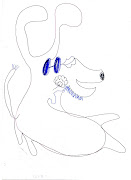okay this is the new part a, i've added the 60 words to complete broken sentences or weirdly phrased sentences and improved fluency. plus enhanced a few points. someone please DEFINE MBWA?
love, kaela.
Q1. COMMUNICATION BARRIERS THAT EXISTED IN AEC
STRUCTURAL BARRIERS AND PERCEPTION DIFFERENCES
In AEC, the management is regarded with authority by employees. The employees are not given opportunities to express their opinions as management does not involve them in meetings. Additionally, separate facilities for the management exist as structural barriers resulting in social interaction being affected. This resulted in the employees viewing themselves unimportant and not of value as compared to the management staff.
INFORMATION OVERLOAD
AEC’s vice-president, George, faces friction with his employee John and usually sends written memos instead of having direct confrontations. These memos result in information overload as they convey important and complex instructions for production. Employees are likely to misinterpret these memos and this would lead to incorrect procedures taken in the production.
FILTERING AND LANGUAGE BARRIERS
John refused to voice out his frustrations and practiced filtering to delete negative information presented about his work so that events sound more favorable. Many employees behave similarly to earn the management’s approval. Additionally George’s compliments to John were misinterpreted as complaints, showing that language is yet another barrier among AEC’s staff.
HOW DID THE AUTHOR DEAL WITH IT?
AUTHOR’S APPROACH TO COMMUNICATION BARRIERS
Thus the author has employed the management by walking around (MBWA) method to find out more about the barriers in AEC (McShane and Travaglione 2007). Through this, he made use of verbal communication, “written or oral use of words” and non-verbal communication which involves “elements and behaviours not coded into words” to win the trust of the floor employees (Bartol et. al., 2005 p.433). He made an effort to be around the shop floor staff frequently. By playing the role of an active listener to many of the shop floor members, he empathised with them and made sure not to demand anything from them. The author was also able to communicate with them verbally and as such he became the messenger between the management and floor staff.
LIMITATIONS TO THE AUTHOR'S APPROACH
The advantage of MBWA is that there is direct communication between the employees and the management (Wood et al 2004). The management can also understand the internal organizational problems better (McShane and Travaglione 2007). The active listening and MBWA that John practiced improved communication and relationship with the employees. However, overcoming the communication barrier in the communication barrier in the organisation alone will not improve the situation much.
WHAT WOULD WE DO DIFFERENTLY
PERCEPTIONS
The perception among employees remains that the management view themselves as more superior than the floor employees. Culture change or changes in perception of employees play a big role. The only way to have culture change is to have good communication since they cannot be separated. Usually, the norm culture for employees would be that they identify themselves with their organization and accept its values and would be motivated by them (Mullins 2005).
TYPE OF COMMUNICATION TOOLS/STYLE
However, in organizations, communication breakdown is the main problem. The type of communication existing in AEC is a chain network that does not have much interaction with the employees. A more suitable form of communication would be an all-channel network whereby all the employees are fully involved in participation and discussion. To implement all these however, surveys can be done. Doing so can help to determine the attitudes of the employees to the functioning of the organization. George should also be open to the criticisms made by the floor employees. It would be difficult to implement changes in the organisation if the management do not cooperate and see the floor employees as equals (Mullins 2005). Thus mindset and the culture of the company should be changed. The management should be the ones to implement these changes.
TEAMWORK
Another way to improve communication would be to promote effective teamwork between the management and staff. The employees should view themselves as a body working together to bring the company to greater heights. George as the vice-president should be more aware of and pay attention to the floor employees. Only by understanding that each and every employee plays an important part in the success of the organization can they move forward in this area(Mullins 2005). Therefore, awareness of roles in the organization is fundamental in effective teamwork.
MOTIVATION
Additionally, motivation also plays a vital role. One way to tackle the issue of employees misunderstanding that they were being sent for training courses due to their ineffectiveness is to simply promote it in a different manner. Companies could suggest training courses as a form of performance-based reward, as it not only acknowledges the employee’s ability at work, it also act as an incentive for employees who want opportunities for promotions. Such training courses would equip them with the appropriate skills and certificate level to receive promotions.
Thursday, September 6, 2007
Subscribe to:
Post Comments (Atom)

No comments:
Post a Comment